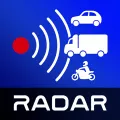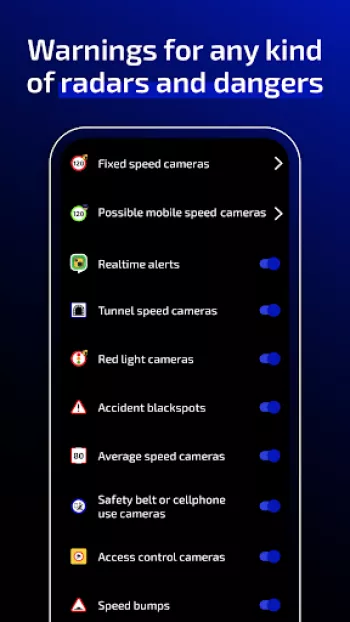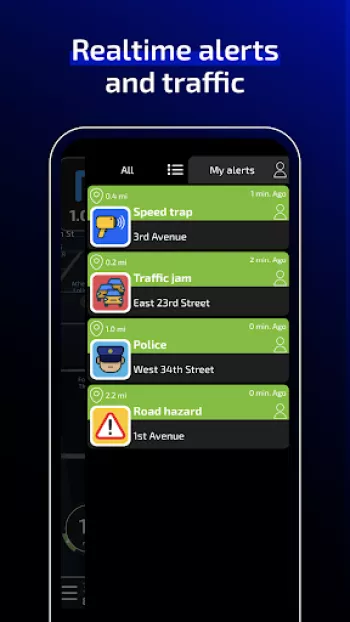Apps Zone

Understanding the Evolution of Speed Cameras and Their Impact on Modern Driving
Speed cameras have become an integral part of traffic policing worldwide, directly impacting driver behavior and road safety. The first speed cameras were introduced as a response to the increasing number of road accidents attributed to speeding. These early devices were rudimentary, capturing images of vehicles exceeding speed limits on film that required manual processing. As technology advanced, speed cameras evolved into sophisticated systems that utilize digital imaging, radar, laser, and even infrared technology to monitor vehicle speed and capture high-resolution images of offending vehicles. Modern speed cameras are automated and connected to centralized systems that facilitate real-time data processing. The impact of these cameras on driving habits is significant. By providing a deterrent to speeding, they have contributed to a reduction in accident rates and increased compliance with speed limits. However, the implementation of speed cameras is not without controversy. Critics argue that they can be used primarily as revenue-generating tools rather than safety measures. Despite such criticisms, studies consistently show that areas with speed cameras experience fewer accidents and lower instances of speeding. This duality of purpose – safety versus revenue – continues to drive debates about their deployment across different jurisdictions. Over the years, speed cameras have also adapted to different road conditions and vehicle types, offering features that cater to various environments. For example, average speed cameras calculate the average speed of a vehicle over a significant road segment, reducing the likelihood of drivers momentarily slowing down at camera sites only to speed up again thereafter. Tunnel radars are designed to monitor speed in enclosed areas where road conditions can be treacherous. The technology behind speed cameras continues to evolve, integrating with broader traffic management systems, adopting real-time updates and allowing for seamless interactions with GPS navigation systems. This level of integration ensures that drivers receive timely alerts and are constantly reminded of speed regulations, thereby promoting safer driving practices.
The Role of Road Alerts in Enhancing Driving Safety and Awareness
Road alerts play a crucial role in modern driving by providing timely information to drivers about the conditions of the roads they travel. These alerts encompass a wide range of notifications, such as hazardous weather conditions, roadworks, accidents, and even traffic congestion. The integration of road alerts into navigation apps has transformed how drivers plan and execute their journeys. With access to real-time data, drivers can avoid potential dangers and delays, opting for safer and faster alternative routes. This not only enhances personal safety but also contributes to an overall smoother flow of traffic. In addition to reducing driving-related stress, road alerts are essential for maintaining situational awareness, especially for long-distance or professional drivers who encounter varied driving environments. The technological advancements in this field are notable. For instance, with the use of GPS-based systems and community-driven data sharing, apps can provide hyper-localized and precisely timed alerts. Drivers no longer have to rely solely on radio broadcasts or digital signboards which could be outdated by the time they are received. Furthermore, the role of artificial intelligence in processing big data for road alerts cannot be understated. AI algorithms analyze vast amounts of data from different sensors and crowdsourced inputs to deliver predictive alerts about road conditions or potential safety hazards. This anticipatory feature can be crucial for avoiding accidents in areas prone to sudden weather changes or high traffic volumes. Moreover, in the context of smart cities, road alert systems are increasingly being synchronized with traffic control measures, including automated traffic light systems and smart road signage, to ensure dynamic traffic management. While the convenience and enhanced safety offered by road alerts are undeniable, there is an underlying need to continuously refine these systems to address potential issues such as alert fatigue or incorrect data dissemination. Essentially, as road alerts become more sophisticated, they present a powerful tool for revolutionizing road safety and reinforcing responsible driving behaviors.
Advanced Features of Modern Road Safety Applications
Modern road safety applications, such as the renowned Radarbot app, have pushed the boundaries of how technology can assist drivers in staying safe and informed. These applications do not just offer standard radar detection; they employ a suite of advanced features that provide comprehensive coverage and enhance the user experience in unprecedented ways. A standout feature is the real-time alert system that warns drivers of upcoming speed cameras, road hazards, and traffic conditions, allowing them to adjust their driving habits accordingly. This capability is powered by a vast community of over 50 million drivers who contribute to a shared database, ensuring the most current information is available. Furthermore, Radarbot’s offline radar detection system sets it apart by providing uninterrupted service even when mobile network connection is unavailable, making it a reliable companion during road trips in remote areas. Integration with other critical systems, such as GPS navigation, ensures drivers can receive directional assistance alongside radar alerts in a single application. Another advanced feature is the ability to differentiate between alert types based on vehicle category – whether for cars, motorbikes, or commercial vehicles – providing tailored warnings suitable for each type’s specific needs. This is especially beneficial for professional drivers who must adhere to different rules and speed limits than private vehicles. The app is also designed to work in the background, allowing users to multitask by running other applications for music or calls, without missing vital alerts. Voice and vibration alerts further improve usability for motorists by offering non-intrusive notifications that do not require active screen engagement. The customization options available in these applications ensure that users can configure alert distances, languages, and sound settings according to their preferences, enhancing both usability and accessibility. These advanced features contribute to a driving experience that focuses on safety and convenience, embodying a forward-thinking approach to road safety management and driver assistance.
Evaluating the Impact of Real-time Traffic Alerts on Driving Behavior
Real-time traffic alerts are a major development in the realm of intelligent transportation systems, offering drivers a significant advantage in managing their commute. By providing insights into current traffic conditions, these alerts influence driving behaviors by helping motorists make informed choices, such as rerouting to avoid congestion or anticipating slower travel times due to accidents or roadwork. The direct impact on driving behavior is multifaceted; it not only reduces travel frustration but also decreases unnecessary idling and fuel consumption by helping to prevent gridlock situations. Within urban environments, where traffic congestion is a chronic issue, the positive impacts of real-time traffic alerts are substantial in alleviating rush-hour pressures. Technological advancements in telematics have allowed these systems to leverage data from a wide array of sources, including road sensors, digital monitoring devices, and user-reported events. This confluence of data streams is processed at lightning speed to deliver precise alerts and recommendations. In addition to easing congestion, these alerts contribute to the reduction of road accidents by informing drivers about unforeseen obstacles and hazardous conditions ahead of time. As drivers adjust their speeds and routes in response to these alerts, there is a notable impact on road safety outcomes. On the sociological side, real-time alerts contribute to a shift in driving culture, fostering habits of caution and courtesy. Drivers come to realize the shared nature of the roads and the necessity of adaptive driving strategies. However, for these systems to maintain efficacy, the considerations of data privacy, accuracy, and user trust must be continuously addressed. Platforms that distribute real-time traffic alerts must ensure that their data sourcing is both ethical and reliable to maintain public confidence and compliance. In summary, real-time traffic alerts not only streamline travel but also foster a responsible and informed driver community that is attuned to the dynamic nature of modern roadways.
Enhancing the Driving Experience with Comprehensive Safety Apps
The use of comprehensive safety apps like Radarbot has greatly enhanced the driving experience by combining multiple functionalities into one cohesive platform. At their core, these apps provide drivers with detailed notifications about speed cameras and road hazards, but their true value lies in their ability to serve as an all-in-one driving assistant. By integrating offline radar detection, real-time community-based traffic updates, and GPS navigation, these apps ensure that drivers are equipped with the knowledge they need to navigate efficiently and safely. For instance, using Download for Android allows users to experience the full range of navigating features without the constraint of data coverage, which is pivotal for long-distance travelers venturing beyond urban areas. This comprehensive approach not only simplifies the logistics of managing separate navigation and alert systems but also enhances safety by minimizing distractions. Furthermore, these apps are designed to cater to the diverse needs of different drivers. Professional drivers with large vehicles benefit from tailored alerts that consider specific vehicle restrictions and road regulations. The inclusion of features such as vibration alerts for motorcyclists and the option for visual or auditory signals helps accommodate various preferences and disabilities, promoting inclusivity. Moreover, these apps incorporate cutting-edge updates thanks to regular contributions from a global user base, ensuring data accuracy and relevancy in a constantly changing world. Innovations in wearable technology also sync with apps like these, allowing alerts to be delivered through smart devices, thus broadening the accessibility and ease of use for drivers. As these apps continue to evolve with advancements in digital infrastructure and mobile computing, they represent a pivotal intersection of technology and transport, aimed at creating safer roads and more informed drivers. In closing, as we embrace the future of vehicular travel, comprehensive safety apps stand as indispensable tools that redefine the parameters of what it means to drive in the modern age.
Share Your Opinion
Your Email Will Not Be Published.
All Rights Reserved © Apps Zone 2025






































A Google user
This has been an excellent program. It auto updates all photo radars. My only complaint is that when I try to enter info on a newly installed photo...
Aries
Updated to the latest version, but the issue still persists. Despite the fact that I have female voice in google settings (and ticked speech synthe...
Linda R Wood
❤️ this app. Gives speed, warnings, cop radars & construction zones. It would be great if you guys paired with Google maps & it was all integrated....
Dmitriy Levsh
What I do not like in this application, it signals about the cameras, which is not on way you go, but around your car, in some radius. It could be ...
Paul Rudi Bottse
The application is good (3 st. Many speed bumps are missing. The radar station locations are not accurate. I try to assist with updating the locati...